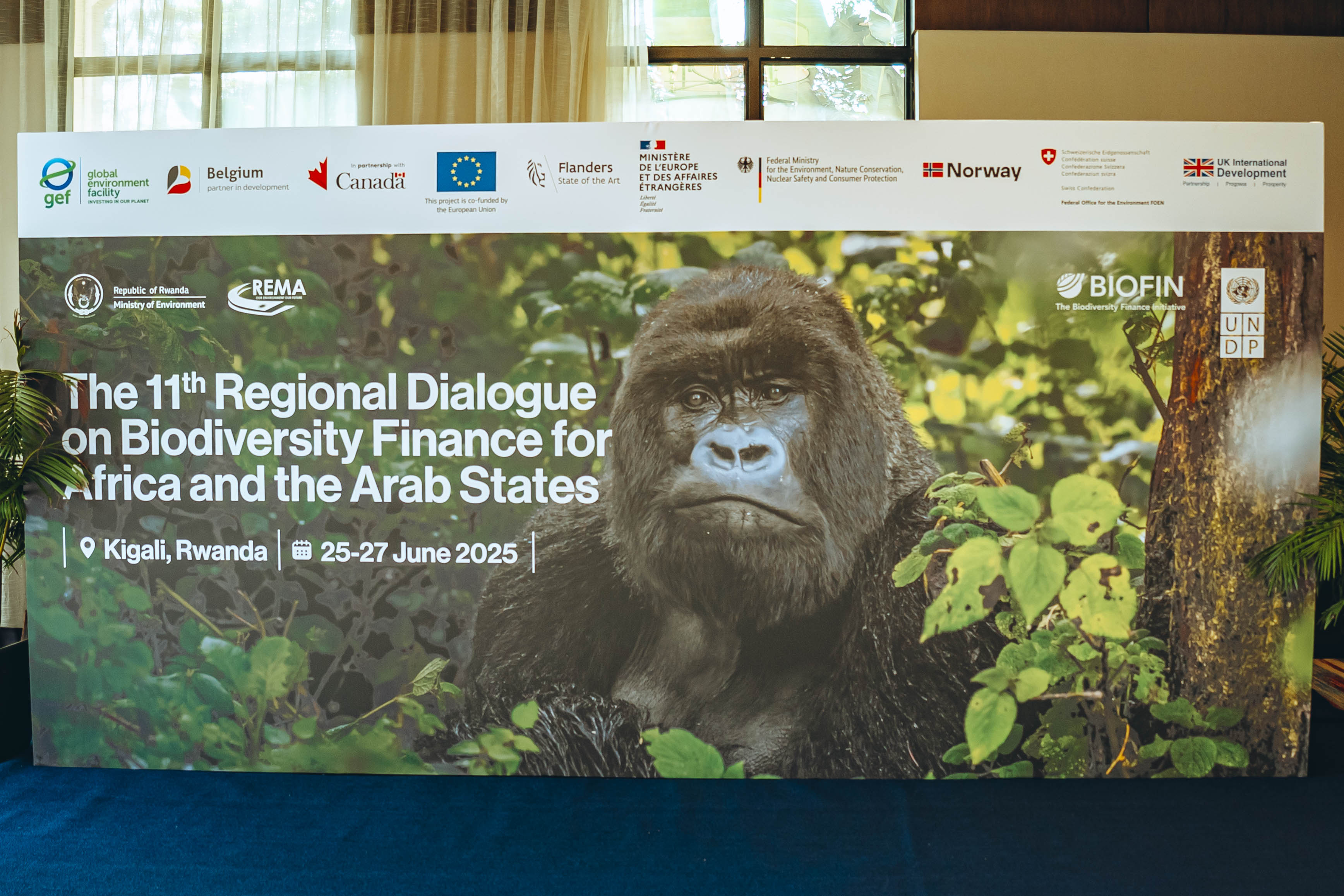
We’re marking a pivotal year for nature finance across Africa and the Arab States.
Governments are facing a widening gap between the resources available to them to protect and conserve nature, and the mounting costs of doing so as economic pressures that don’t accurately account for nature take their toll.
Since 2018, support from UNDP’s Biodiversity Finance Initiative enabled countries such as Botswana, Rwanda and Zambia to finance innovations and catalyze over US$200 million for nature.
Since 2024, 44 new countries from the two regions have joined BIOFIN, advancing Biodiversity Finance Plans with support from the Global Environment Facility (GEF).
In June, more than 150 biodiversity finance experts and senior government officials from over 55 countries across Africa and the Arab States gathered in Rwanda for the 11th Regional Dialogue on Biodiversity Finance.
The agenda included a cross-section of nature-related finance solutions including Debt for Nature Swaps, nature-linked Insurance, Biodiversity Credits and more.
These finance solutions are part of BIOFIN’s 300-strong catalogue that a first wave of 41 implementing countries globally have leveraged till now to unlock over US$1.6 billion in financing for nature.
The Biodiversity Finance Gap
Without clear strategies to mobilize and align funding, many countries struggle to implement national biodiversity goals and the targets set under the Kunming-Montreal Global Biodiversity Framework.
The three-day event in Rwanda provided a critical platform for country delegations to exchange knowledge and accelerate the implementation of biodiversity finance solutions tailored to national needs.
As countries shift from identifying funding gaps to rolling out finance solutions such as green bonds, biodiversity credits, and nature-linked insurance, this year’s dialogue emphasized practical implementation.
The GEF-funded Global Biodiversity Finance Programme has been a shot in the arm for nature finance, with 91 new countries drawing up Biodiversity Finance Plans through the support they receive.
For the 44 countries in the planning stage of the process, the dialogue served as a vital opportunity to learn from countries that have been designing and implementing Biodiversity Finance Plans (BFPs) since 2018.
Lessons from Biodiversity Finance Plan Implementation
The Biodiversity Finance Plan (BFP) session provided a space for countries to share how they moved from drafting finance plans to implementing concrete actions. Countries that have been part of BIOFIN since 2018 presented their journeys, offering invaluable guidance to the newcomers.
Participants highlighted both progress and challenges. Many countries presented flagship finance solutions—such as biodiversity offsets, fiscal reforms, or private sector engagement models—demonstrating how planning can translate into real impact. For newer countries, seeing these examples in action provides a sense of direction and inspiration.
This interactive format allowed for rich peer-to-peer learning, where countries could reflect on their own contexts and identify next steps. Stakeholders, including funders and technical partners, also gained insight into how BFPs can drive long-term transformation in biodiversity financing.
Unlocking Capital Through Debt for Nature Instruments
Another key session focused on Debt for Nature, a powerful tool in the biodiversity finance toolbox. With many countries facing tightening fiscal space, participants explored how innovative debt instruments can help mobilize resources for conservation while easing financial pressure.
The session discussed thematic bonds, blended finance funds, debt swaps, and nature bonds—all aligned with BIOFIN’s own work. Thematic bonds, such as green and nature bonds, are increasingly used by governments to finance ecosystem restoration and climate adaptation.
Blended finance emerged as a key mechanism to attract private investment by reducing risk through concessional capital. Meanwhile, debt swaps were highlighted as a win-win opportunity for countries burdened by debt but rich in biodiversity, allowing them to channel funds into nature conservation in exchange for debt relief.
Chris Smith, Head of Financial Advisory at Bankers Without Boundaries, underscored the urgency: “The biggest problem in the world is not the lack of money, but the unbalanced distribution of it to impact sectors adequately, such as biodiversity.”
Nature-Related Financial Sector Innovation
Another session showcased the potential of insurance and financial sector tools to manage biodiversity-related risks. Biodiversity loss and ecosystem degradation pose systemic threats to economies, but insurance can serve as both a buffer and an incentive for conservation.
Participants explored successful examples, including Nepal’s wildlife conflict insurance, which compensates communities for losses while promoting coexistence with wildlife, and Colombia’s water fund-based parametric insurance model. Other innovations included satellite-based grass cover insurance in Kenya and cyclone coverage for coral reefs.
Speakers emphasized that agriculture, highly vulnerable to environmental risks, must integrate insurance into broader financial frameworks. Well-designed, trigger-based parametric insurance is gaining traction due to its efficiency and lower administrative costs, but careful calibration is key to avoiding coverage gaps.
The session also addressed the need for insurance companies to include biodiversity considerations in their risk models and underwriting practices. Multi-stakeholder partnerships and better data access will be crucial to scaling these solutions.
The Regional Dialogue in Kigali reaffirmed the importance of regional collaboration, practical implementation, and continuous learning in advancing biodiversity finance. For new BIOFIN countries beginning their journey, the dialogue offered not only technical insights but also a community of support, experience, and shared ambition to finance nature for the benefit of people and the planet.
Categories
Archives
- December 2025 (2)
- November 2025 (5)
- October 2025 (6)
- September 2025 (2)
- August 2025 (10)
- July 2025 (9)
- June 2025 (5)
- May 2025 (8)
- April 2025 (9)
- March 2025 (8)